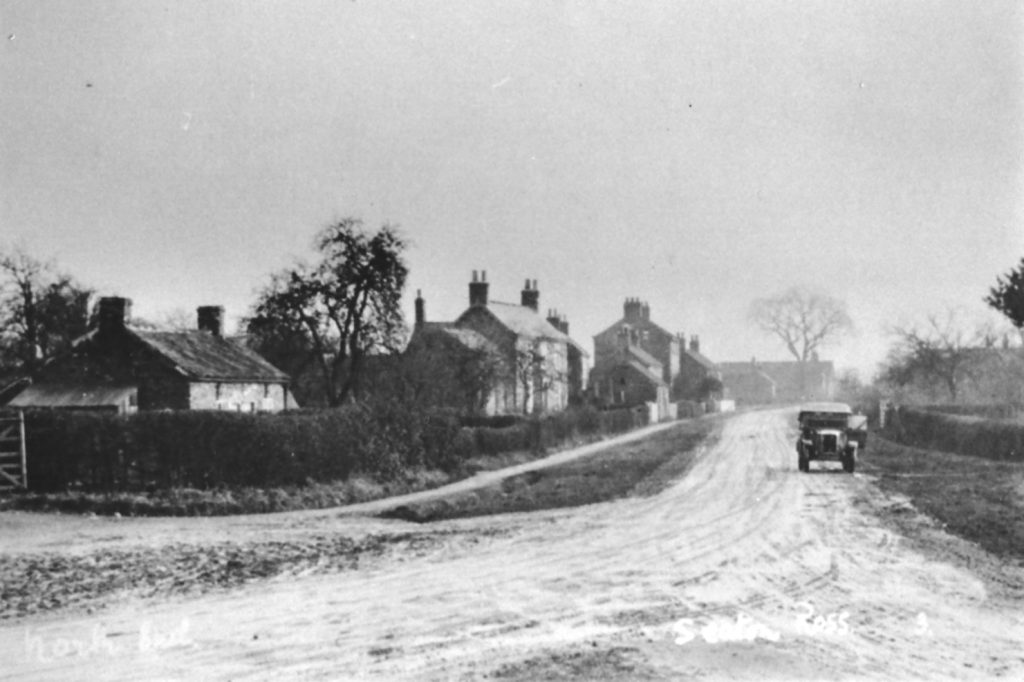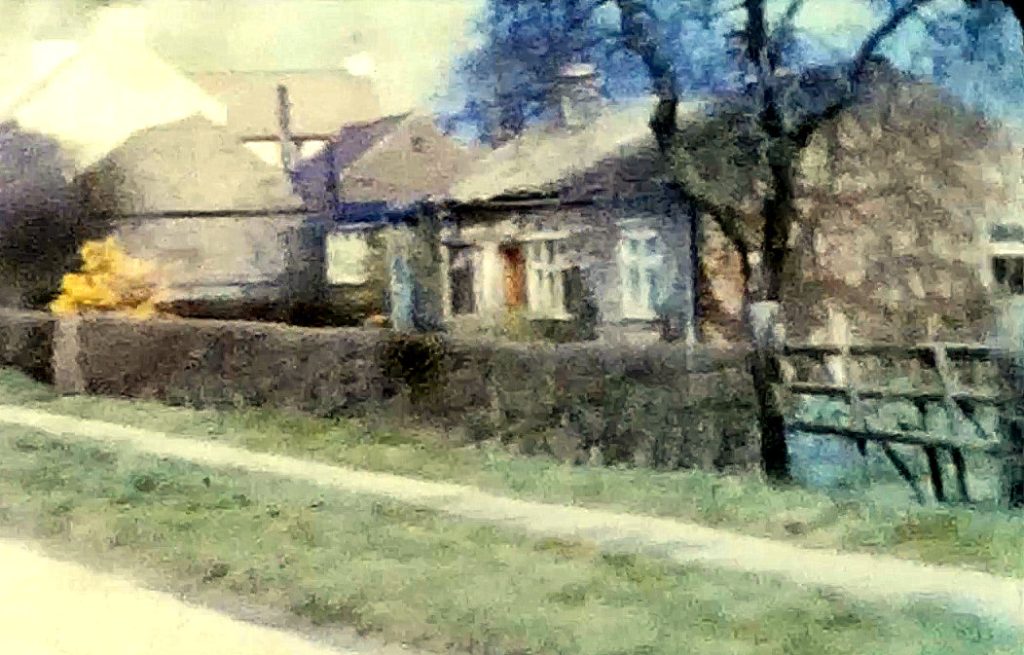Click on any photo to enlarge and scroll through them all.
Today there are 38 houses on North End. At the start of the first world war there were 20 (16 dating from 1811) and of these 20, 16 still stand.
The top of North End was essentially the north end of the village until after WW1 as there were no houses on Mill Lane.
This first view is from Old Mill south east towards North End and shows Old Mills in the foreground with the Blacksmiths Arms to it’s left.


At the very top of North End is a house now known as Old Mills (b.1813), which sits on the junction of Breckstreet Lane and Mill Lane. This guarded the entrance to the Old Mill and the steam mill.



Just down from the top of North End was a pond to water cattle. Opposite was the Blacksmiths Arms [PT] (b.1813) – later known as The Bombers and most recently Halifax House (after the Halifax bombers that used the nearby airfield in WW2).
Turning to face SE into the village we can see two, of the four, now-demolished Parish Cottages [PT](b.1799 & 1820) on the left – now the site of the village plot. These are also visible in this still from a 1963 video.


On our right, and opposite the Blacksmiths Arms, is a farm now known as North Cote (b.1802) – below. This was demolished and replaced recently. It is notable for the central chimney stack. Beyond it are houses now known as Holly Tree Cottage (b.1807 – left below) and East Leigh Farm (right below). From the brickwork it looks as though Holly Tree Cottage was originally a small, single (?) storey cottage.


Opposite these on our left side is North End Farm – built in 1792 – and one of the older village houses.




Just beyond is the farmhouse now known as Sunnyside. On the road just in front of it is a workshop that has been used for a number of purposes – mainly wood working related. Sunnyside can also be seen in the first of the photos below.
Next we come to a group of (originally) five houses: These start with three terraced cottages known as Dial Cottages (b.1838-43) – the first one having a large William Watson sundial [PT] on its front. These have now all been combined into the one Dial Cottage.
Next to these and adjoined to them is an obviously Georgian house, West View – which was built earlier in 1801. Beyond it and past a narrow trackway is the Old Mustard Mill [PT] – built in 1833 and now converted into two cottages.
These all face onto fields on the right side of the road (SW). This aerial photo shows this well and also shows ‘The Cottage’ in the bottom right. The bungalow is more recent.


Photo above courtesy of Will Blackburn
The Cottage is opposite the end of this block. on our right. It has been more recently considerably enlarged.
After some more fields, there are two more houses almost opposite each other: On the left is a single storey cottage now extended and called The Clocks (b.1802 -previously Lesta Villa) and just past it on the right the farm – Guildford House – in the foreground below.


Further along on the right as we travel south are The Gables (b.1845 – previously White Rose Cottage) and Wold View Cottage – shown left and in the second photo below. An earlier building stood on the site of The Gables.
The Gables and Guildford House can be seen in the aerial view below, on the far side of the road. Also very prominent in the foreground is Cross Farm (b.1848) with its extensive barns and yard. Jacaranda Cottage and Barn End Cottage have been converted from one of the barns. An earlier building stood on the site of Cross Farm. Almost the same view is seen in the colour photo below except Wold View Cottage can also be seen


Other houses at the Cross may be seen on the page dedicated to them. See the Village Photos – Street by Street menu.
All photos are from the collections of Bessie Fridlington, Dave Waby and Jane Henley unless otherwise attributed. If you have other photos or clearer copies that we could include – please contact us.
The map above the heading is from the OS 25-inch 1889 map. Reproduced with the permission of the National Library of Scotland













